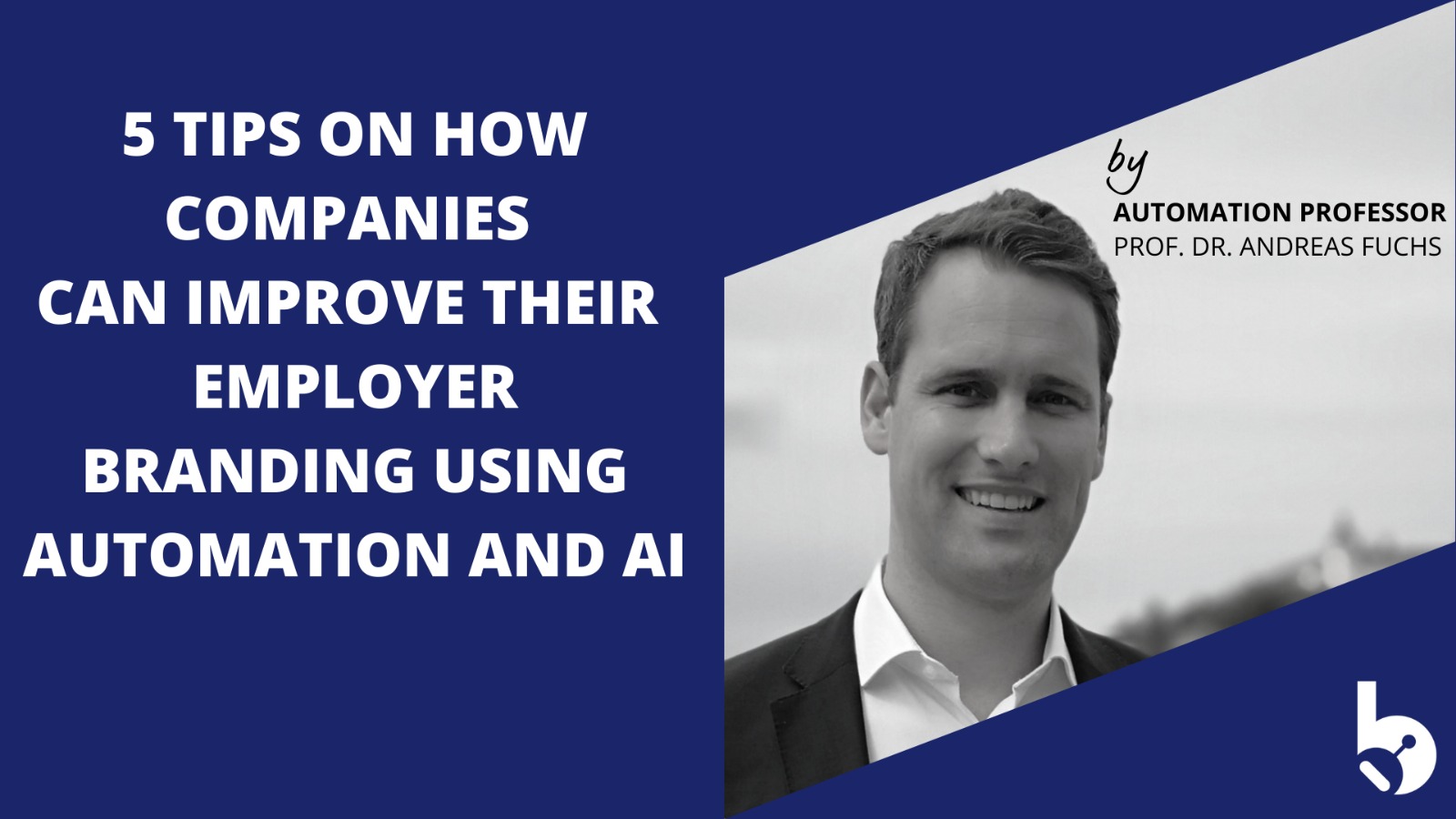5 Tips for using Automation & AI to boost your Employer Brand

The shortage of skilled workers has become a crucial challenge for leaders in today’s economy. Especially in the post-COVID phase, this problem has further intensified. However, while automation and artificial intelligence (AI) have often been perceived as a threat to human jobs in the past, studies now show that they could actually be the best way to fill the labor gaps that humans alone cannot cope with.
The results of a survey conducted by UiPath, which involved 500 US executives and business leaders from large companies, highlight the potential of automation. Approximately 62% of the respondents stated that the current shortage of skilled workers is a serious problem for them, while 69% have recently lost key employees due to mass layoffs. Faced with these challenges, around 78% of the executives plan to increase their investments in automation and AI to mitigate the negative impacts of rapid turnover.
It is already evident that companies are leveraging the benefits of automation and AI. 83% of the surveyed executives stated that they are already using various forms of AI automation in their companies. These companies are now seeking new ways to address workforce issues using these technologies.
Executives are also aware of the advantages of automation. 71% are convinced that these tools save time for users in their organization, and 63% see improved productivity. In addition to the purely efficiency perspective, the use of automation and AI also has a direct positive effect on employer branding.
Here are 5 insights on how automation and AI strengthen a company’s employer brand:
Step 1: Align automation with long-term goals: Automation has significant potential in the modern work environment when used correctly. The right technology can enhance team efficiency and speed, reduce errors, and improve the customer experience. The key to harnessing all these benefits is to have a clear vision from the beginning of what automation is meant to achieve.
One of the best ways to use automation to improve your workforce is by using tools that give qualified employees more time for important and creative tasks. By automating repetitive tasks that would otherwise consume valuable time for human employees, they can engage in more meaningful and satisfying work.
By reducing the number of less attractive tasks in the standard job description through automation, companies can even make their positions more appealing to employees who may otherwise not be interested in roles that require a lot of data entry or repetitive information processing.
Step 2: Harness automation to engage younger generations: The pandemic and the “Great Resignation” are not the only factors contributing to the labor shortage. Millions of workers have retired during the pandemic and chosen to permanently exit the workforce. In most industries, there aren’t enough “new” employees to replace these lost skilled workers.
If companies want to adapt and evolve at a competitive pace, they need to ensure that their work environment is attractive to Generation Z and younger employees. Using automation tools can help position a company as a forward-thinking and technologically savvy brand, appealing to professionals who have grown up in a digital environment.
You can also use automation to increase the focus on “meaningful work” for new employees. Studies show that contributing to society and engaging in meaningful work are among the top priorities for today’s employees. You can utilize automation to identify processes suitable for automation and help make the world a better place by reducing energy consumption and even minimizing waste within your organization.
Step 3: Deploy automation in the hiring process: Managers can even utilize automation technologies in the hiring process. In the aforementioned study, 58% of executives stated that higher rates of onboarding and offboarding have become a major challenge in a labor-constrained market. The consequences of these challenges often include disrupted workflows and dissatisfied employees.
However, automation tools can assist in streamlining HR workflows and making these processes as smooth as possible. Automation can accelerate processes such as hiring new team members and sorting applicantsto find the best individuals for each position.
Step 4: Utilize automation for employee attraction and retention: As mentioned earlier, automation can help companies appeal to younger generations, but it can also be a great tool for attracting employees of all age groups. Approximately 85% of today’s team leaders believe that automation will help them retain employees and quickly hire new talent when the great resignation wave hits.
The aforementioned study found that employers can differentiate themselves by providing training on using automation tools and leveraging the unique support that automation systems can offer. Currently, one in three executives state that a lack of access to training is one of the most common reasons why employees leave their jobs. Furthermore, most executives (60%) believe that performance and job retention can be improved by providing employees with the opportunity to learn new skills while working.
These findings also confirm the results of a previous study in which 91% of respondents indicated that their employers should invest more in digital and technological training opportunities to ensure that their employees can succeed in their future work.
Step 5: Harness automation for increased transparency and insights: Lastly, it is worth mentioning that automation can also contribute to improving the work situation in today’s world by providing teams with access to more useful information. Automated reporting and dashboards create transparency and make employees feel informed and up to date on important developments within the company.
Reducing the shortage of skilled workers through automation and AI There is no easy solution to the global shortage of skilled workers. However, it is evident that automation and AI can make a significant contribution to addressing this challenge. By strategically deploying automation and AI and strengthening their employer branding, companies can become more attractive to skilled professionals and successfully cope with the labor shortage.
Author: Prof. Dr. Andreas Fuchs




